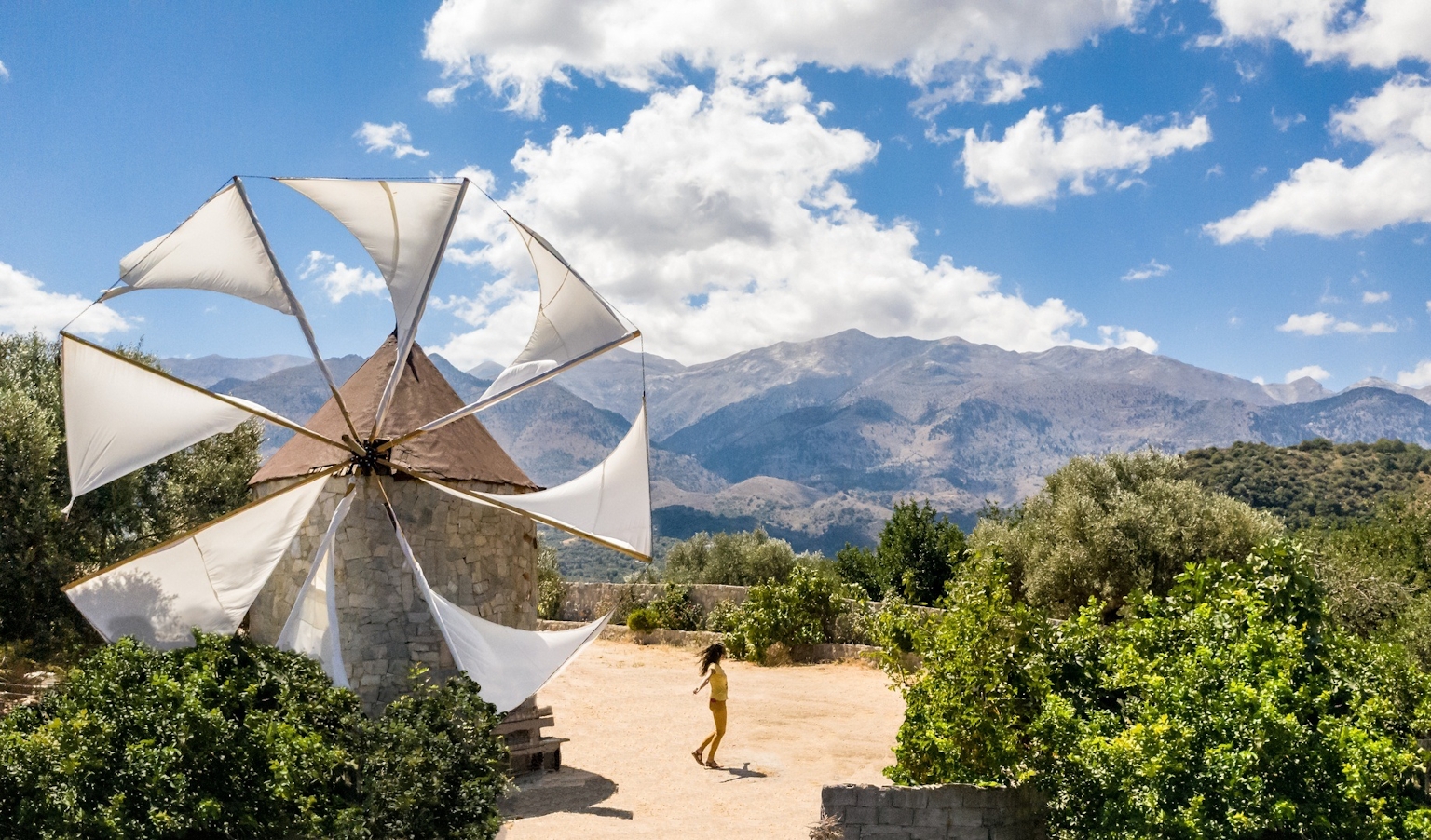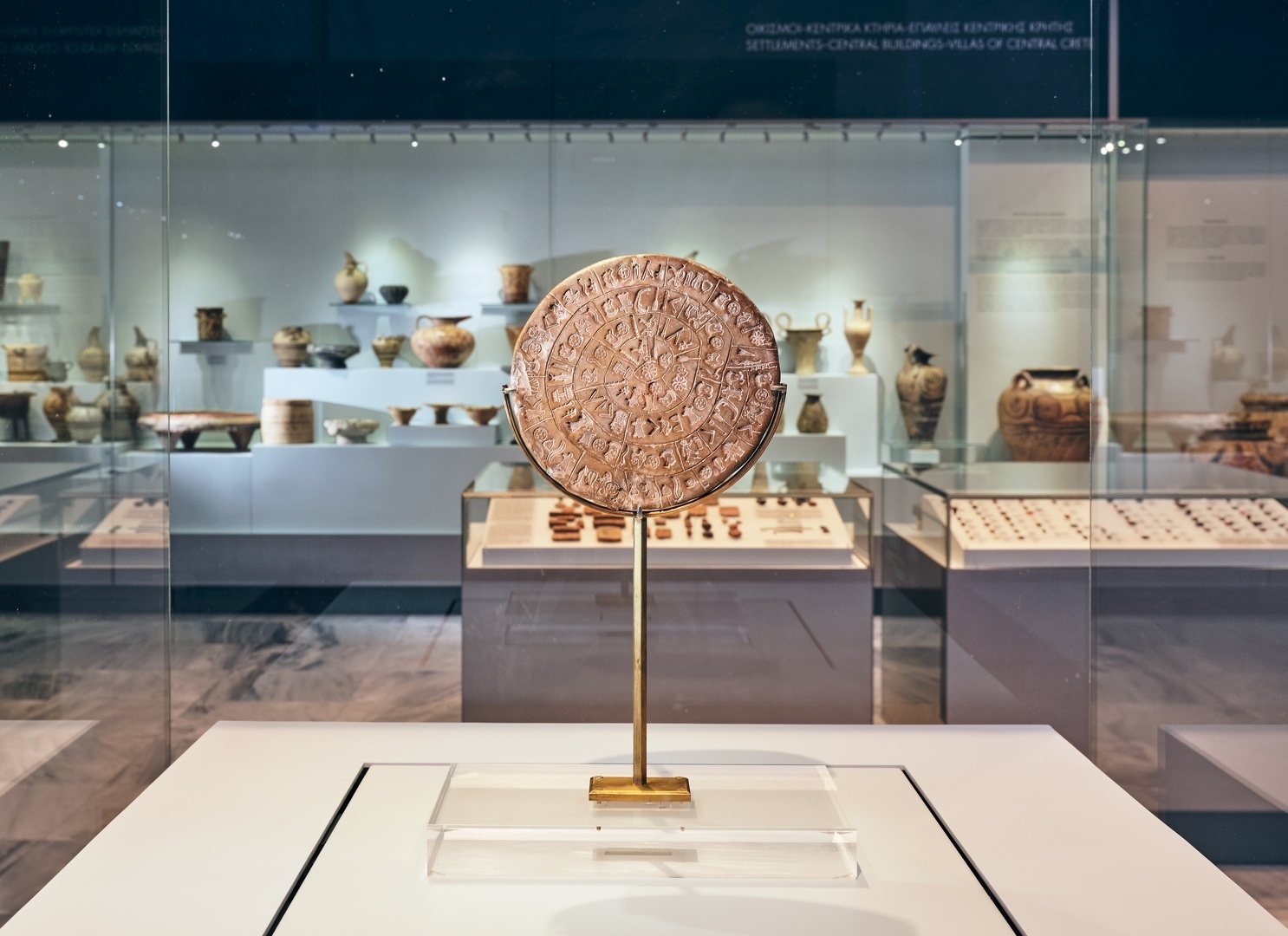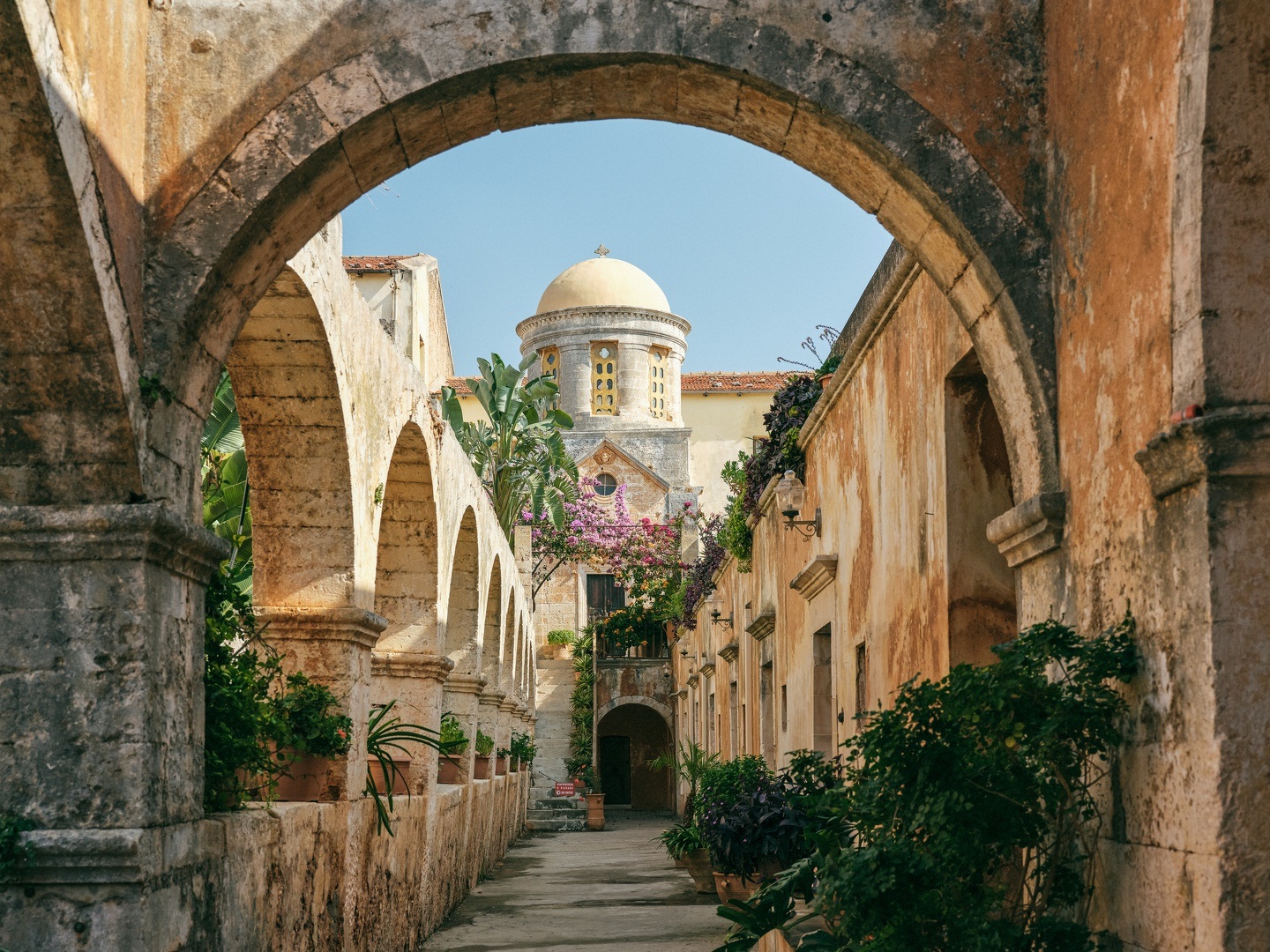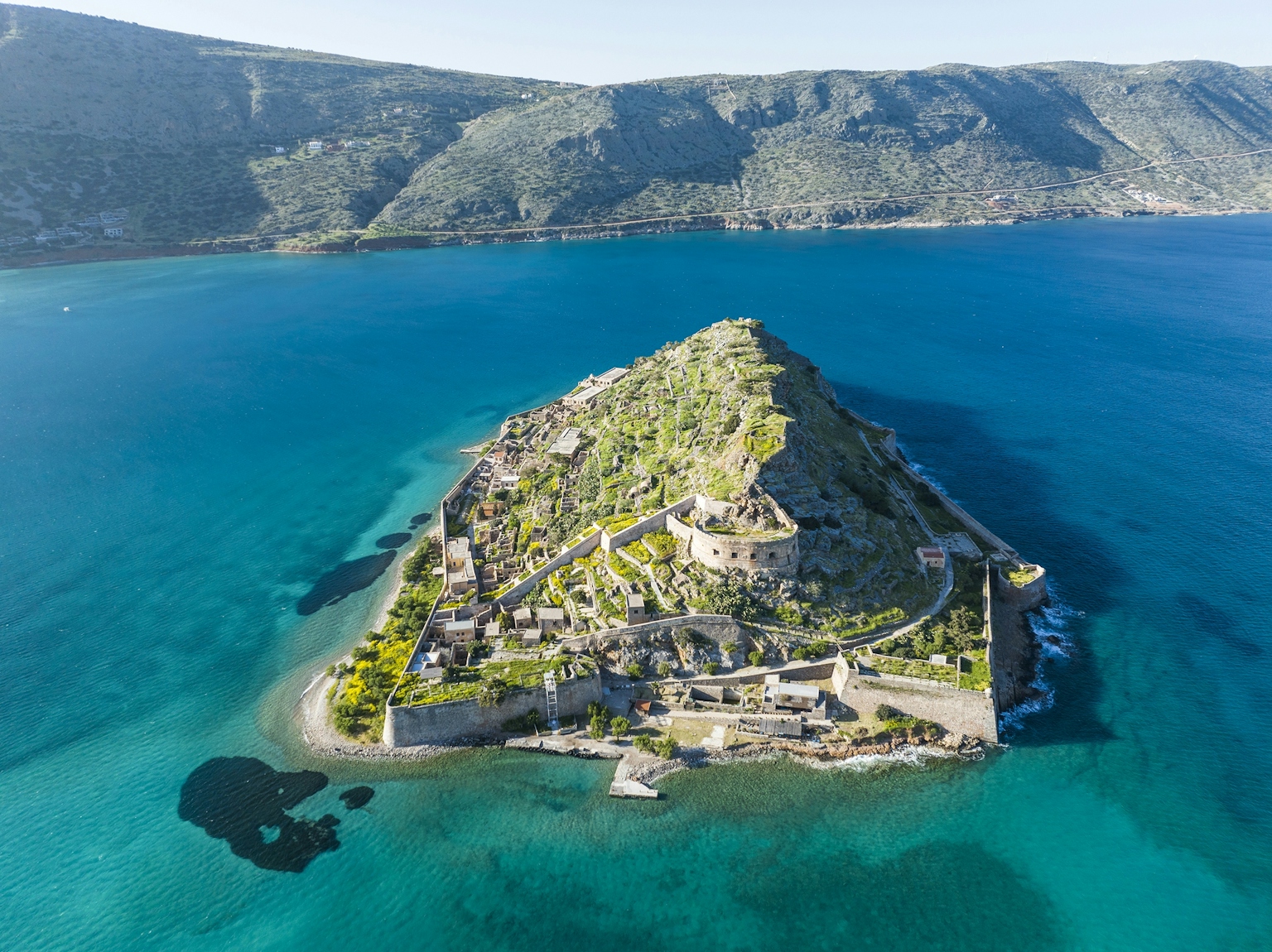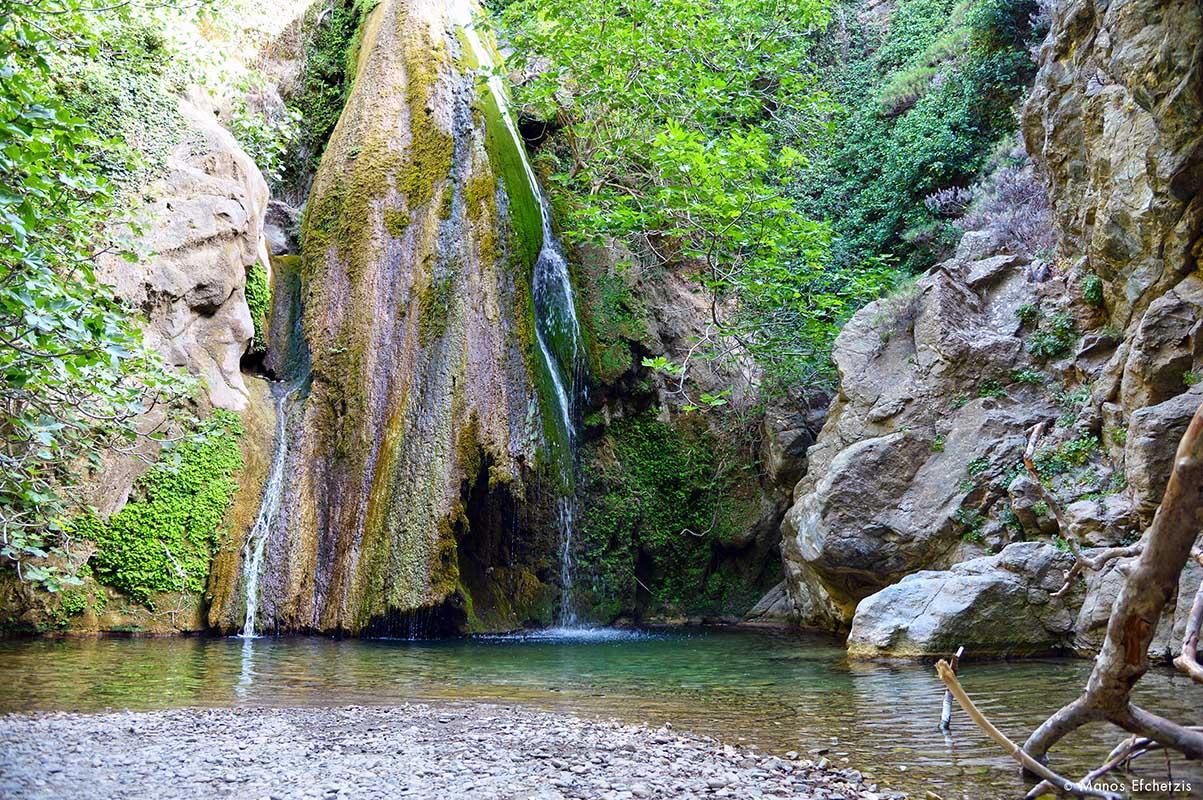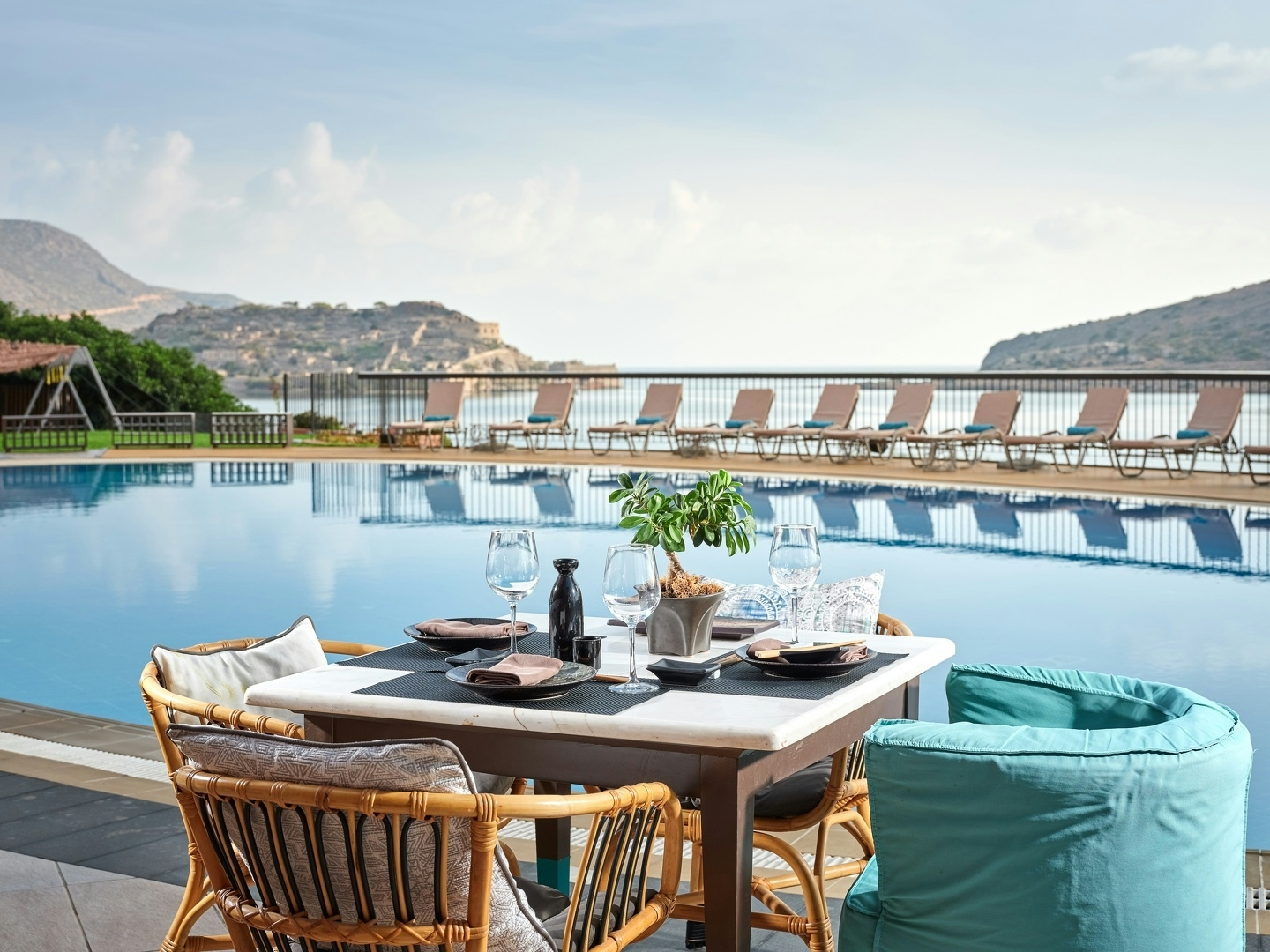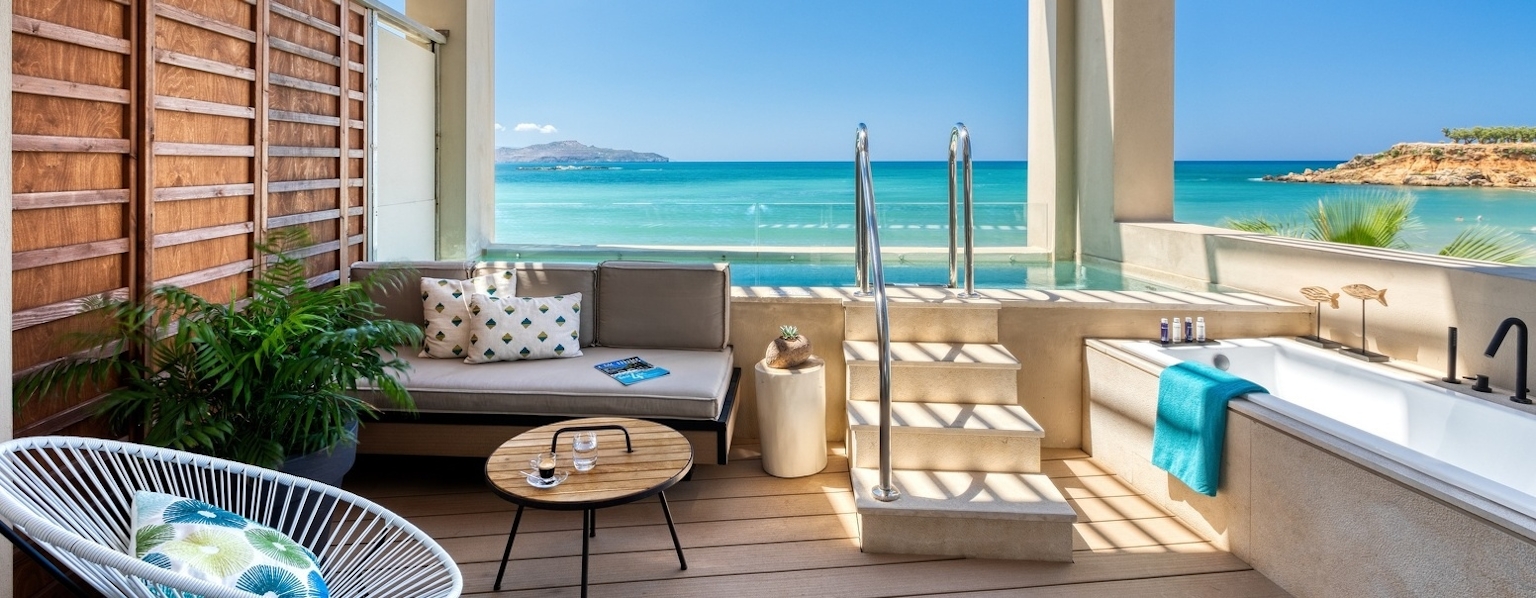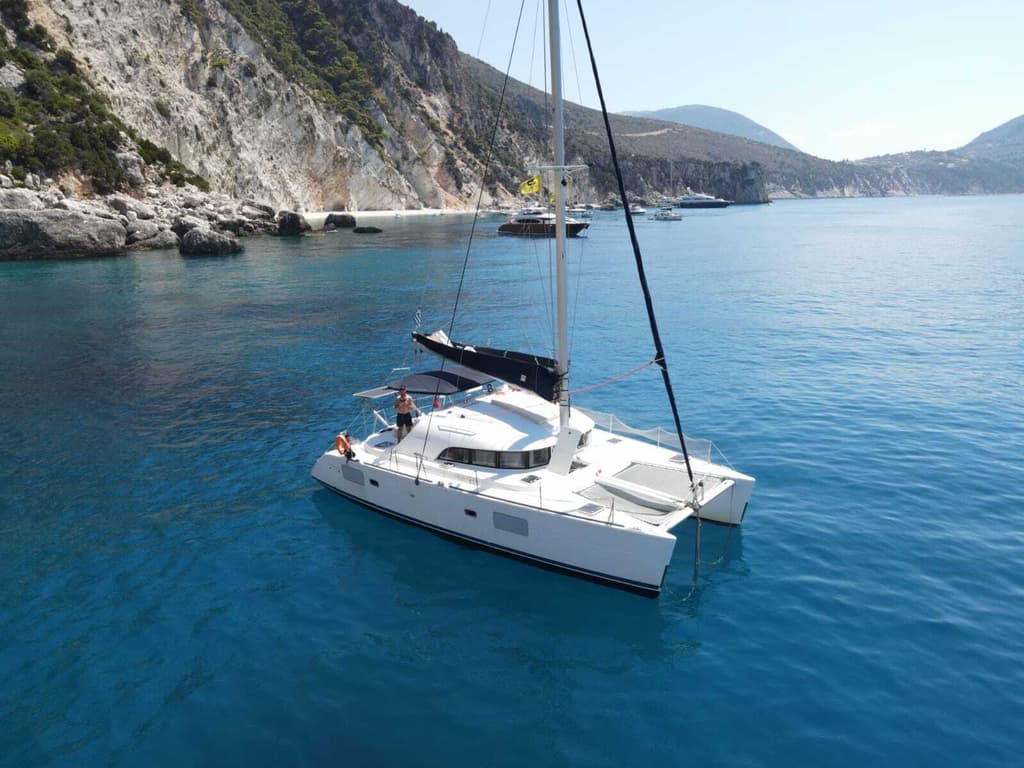A Renaissance garden in the Kampos of Chania
Author Discover Crete
Nature
Nature


A monumental, 6-meter-high gateway with an ornately carved wooden door serves as a hint of the treasure that lies inside the walls of the Isychaki Glebe in Kambos, Hania. There are, in fact, dozens of glebes dotted across the verdant valley of Kambos, and they contain trees and plants from every corner of the world, from avocados and mangos to pawpaw fruit and lychees, but what I'm visiting here at Isychaki is Greece’s only proper Renaissance garden, designed in the late 16th century on the Italian model.
Many of the characteristic elements that define it as a Renaissance garden have vanished over the years, but some still remain. Among them is the orangery, with trees that, in the 17th century, were associated with good health and which stand as proof of the area’s temperate climate.


The original garden focused on the symbolic significance of the different trees, including laurels and cypresses, while the road leading from the main gate was flanked by rows of date palms. Other features typical of Renaissance gardens include the arrangements of rose bushes and areas meant for open-air theatrical performances for small audiences.
On the fall morning of my visit to the garden – which I have pre-arranged with the present owner – the yellowing leaves on the trees are reflected in the water of a round artificial pond that had once contained fish. This peschiera, or fishpond, is of an unusual shape, and was, along with a large aviary, intended to introduce the element of fauna. Its intricate design indicates it must have been the work of some very skilled craftsmen. Likewise, the ironsmiths of Hania must have put all of their talent into the 2,000 hooks specially designed to anchor climbing plants to the glebe's stone walls.


What's more, like any proper Italian garden, this one has a hidden bonus, a giardino segretο, and within the walls of this secret garden, the Isychaki family used to grow vegetable, fruits and medicinal plants for its own use. There's a large in-ground holding tank for water here, too, but we will never know if it was the island’s first swimming pool.
Source: “Handcrafted Crete”, Isabella Zambetaki, Region of Crete

